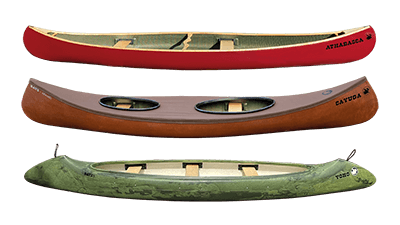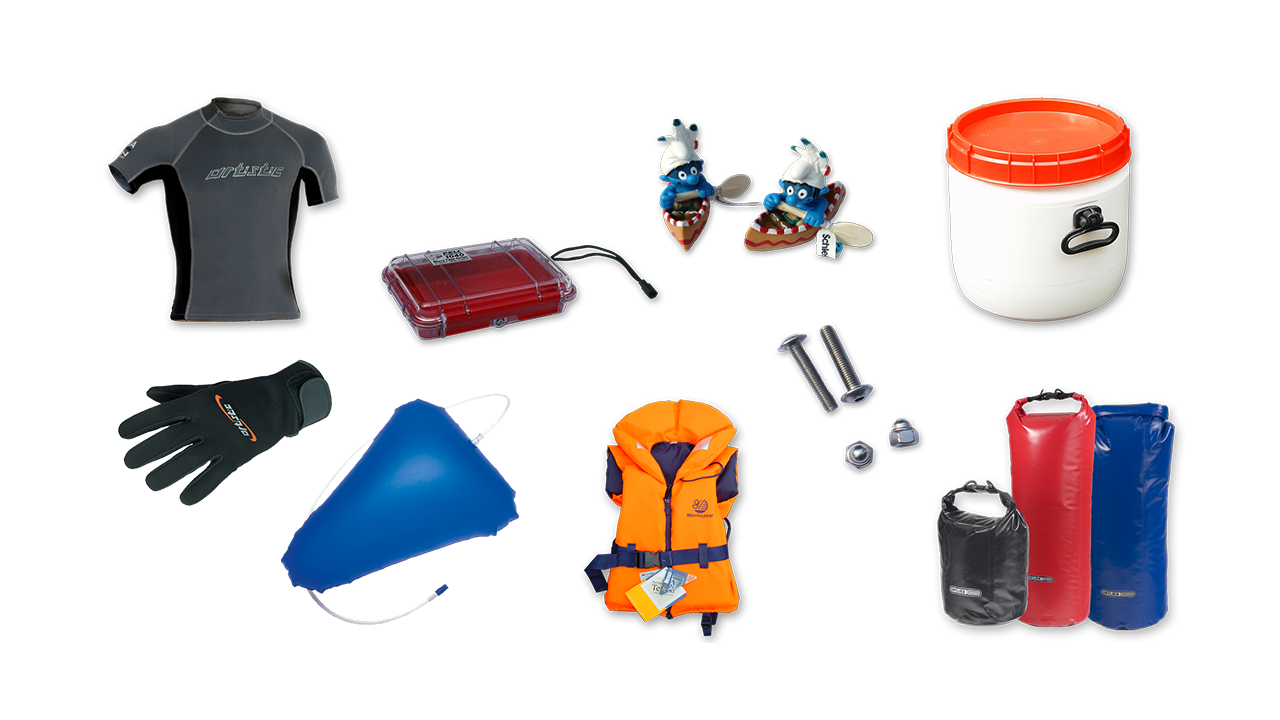
Information on paddle selection and paddle length
The paddle is your "tool" for canoeing and will accompany you for many years.
To make it easier for you to make the right choice, we have put together the following information for you. With the well-chosen paddle you will increase your pleasure while paddling immensely.
Wooden paddle
Wood is a wonderful natural material, very balanced in the weight distribution of the paddle shaft and paddle blade (which is usually heavier with plastic) and always pleasant to the touch, even in the cold season.
A good wooden paddle (such as the Bending Branches models we highly recommend) has an impact-resistant protective edge and usually a glued, easy-to-grip oval shaft and is made of wood that makes the paddle light yet robust. If everything fits together, you can enjoy a wooden paddle for many, many years if you take good care of it.


Plastic paddle
When it comes to plastic paddles, we differentiate between the standard paddles with aluminum shafts and plastic blades that are often used by rental companies, which are very robust and do not require any care, and the very high-quality paddles with carbon shafts and paddle blades made of carbon, prepreg or special plastic. As a rule, the simpler plastic paddles are a little heavier than wooden paddles and the weight distribution is not as balanced.
.
Basics
For everyday use in touring, choose a good and durable "tool" for yourself for maximum comfort and performance. Performance paddles dive easily into the water, are easy to handle and flap-free, and are therefore ideal for use over long distances. The longer your trips get, the more you'll appreciate a lightweight paddle because you'll be able to lift it out of the water with every stroke.
Inexpensive paddles are usually a good choice as a backup paddle.
Choice of length
The following length recommendation from GATZ-KANUS results from over 6 decades of our own canoeing experience on waters of all levels of difficulty, weeks of wilderness tours, leisure trips and, last but not least, over 60 years of advice in our own specialist shop and constant customer feedback.
There are quite a few methods for determining the length of your paddle, some of them completely different and sometimes impractical because they do not apply to hiking and touring paddlers. Almost all of them are based on body size, overall or sitting, or individual body measurements (torso, arm length, etc.), but do not necessarily take into account the type of boat and the variety of waters. None of the methods should be viewed dogmatically (note: some of the information you can find refers to paddles with bent shafts that are used for shorter lengths using a different technique), because all of them can only provide guideline values and, as a rule, all methods for determining length include an absolute sensible scope of up to 10cm (4"). Factors such as boat type, boat width, hull cross-section, seat height / seat distance from the waterline, kneeling or seated driving style, bow paddler or helmsman/woman, load, stroke frequency, paddling style, arm length, type of water, etc., determine the length individually.
Maybe choose a different length for your spare paddle so that you can switch if, for example, your river has long, very flat passages.
Important:
When it comes to choosing the right paddle for your canoe, it's not about just a few centimeters. Your seat height (distance to the water) in your canoe will vary by several centimeters depending on factors such as the number of paddlers and the amount of gear you're carrying. You don't want to have to constantly adjust your paddle length for every trip. Good paddles can last for decades, and you might choose to invest in a new, lighter paddle from time to time. For longer trips on large lakes and rivers, a wood/carbon paddle is unbeatable. In whitewater or rocky small rivers, a reinforced and durable paddle with a reinforced blade would be more suitable.
Length:
Our recommendation: When you stand (without shoes), the paddle should end between your breastbone and chin, i.e. approx. 25-30cm shorter than your height. For very tall people, this does not always have to be optimal and can then be chosen a little shorter. We would be happy to advise you here. The blade lengths of the paddles are almost always the same (with the exception of the Beavertail), so the shaft can also be measured. Paddles with long, narrow blades (beavertail) are also rode 5-10cm longer. If you mostly travel on lakes or deep waters, the length can easily reach the upper limit mentioned above. The same applies to the steering paddle of the canoe driver sitting in the back or driving solo. For bow paddlers and use in shallow water or whitewater, you can also go to the lower limit of the length. A long paddle provides a longer path in the water and therefore more distance per stroke, as well as greater leverage when steering. But it also means a slightly greater use of force due to the greater lever travel, which in our experience can be neglected on quiet hiking trips or compensated for with a lighter and well-balanced paddle. A shorter paddle requires less force, but also requires a higher stroke frequency. Take other sports that you do (e.g. cycling) to compare whether you personally prefer more effort or a higher frequency. The result can be easily transferred to paddling.
Shaft shape:
The standard for touring canoes are paddles with a straight shaft, which are ideal for use on all waters and for all paddling techniques with both sides of the paddle blade as the pressure side. So-called bench-shaft paddles with a slightly bent shaft come from marathon sports, where people ride in an almost exclusively sitting posture, with short, high-frequency paddling strokes and frequently changing sides. They are rarely used in other areas. Only one side of the paddle can be used here and they are not ideal as a control paddle. Team paddles are chosen to be at least 10cm shorter.
Handle shape:
Hand-shaped "palm" handles are very comfortable to hold and are available in one-sided, symmetrical and different versions. This handle shape is a very good choice for touring. T-handles are often found on inexpensive plastic paddles but also on whitewater paddles, as this allows you to grip them more firmly and control them in wild water.





